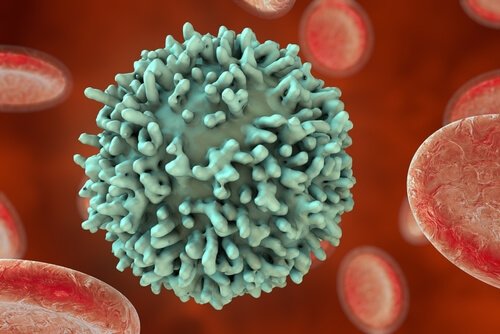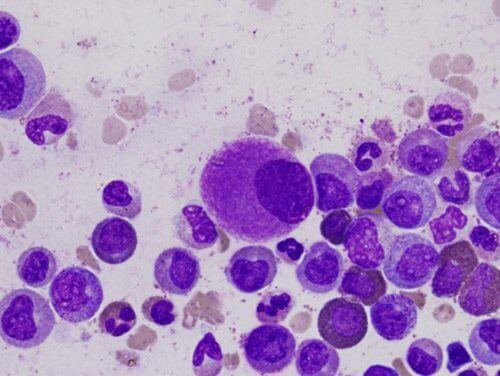How Does the Human Immune System Work?

Our bodies are constantly being attacked by all kinds of pathogens. Our immune system exists to make sure we stay healthy, spot cellular degeneration, and prevent cancer. But how exactly does our immune system work?
This isn’t very easy to explain, but the basic idea is that each component plays a part in defending us from illness and disease. Unfortunately, there are some diseases that can actually weaken our defenses or just go right past them.
Two different kinds of immune system responses
The primary immune system response produces and separates white blood cells, while the secondary captures and processes antigens.

The primary response
The thymus
This a kind of immune system gland. This is where our body matures its T-cells (white blood cells). These cells adapt to the invader. These cells are so important that our immune system wouldn’t work without them.
The thymus is located directly behind the sternum, in between the lungs, which means it’s very sensitive to glucocorticoids. Its basic purpose is to educate T-cells (in other words, to mature them).
Bone marrow
This is a kind of tissue within some of our longer bones, sternum, vertebrae, skull, pelvis, and shoulders. It’s especially famous now because it’s mainly made up of stem cells. Our body uses it to differentiate our immune cells, especially B-cells.
The secondary response
The spleen
This organ belongs to the lymphatic system. It’s located on the upper-left side of the abdomen and is in charge of:
- Filtering our blood supply.
- Getting rid of old red blood cells.
- Capturing antigens in our blood.
The lymph nodes
The lymph nodes belong to the immune system. They’re small, round nodes that we have in various places in our bodies. They all connect through lymphatic vessels. Their job is to filter out foreign particles, which means they play a major role in immune system function.
The adenoid
This organ starts at the bottom of the nasal cavity and blends into the throat. Its size depends on your age. It’s big during childhood and becomes smaller as you get older. It swells when infected.
Peyer’s patches
They’re located in the intestines. They’re groups of lymphatic tissue that cover the lining of the small intestine and identify antigens in your food.
Non-lymphatic organs
There are also non-lymphatic components to the immune system known as antibodies. They’re also a big part of what makes the immune system work, and can be found in our:
- Digestive and respiratory secretions.
- Salivary glands.
- Tear ducts.
- Mammary glands.
- Mucous membranes.
The types of immune system cells
Of all the cells involved in the immune system, 54% are plasma. This is the non-cellular part of our blood. Plasma is what you’re left with when you remove the red and white blood cells. So, those cells make up the remaining 46% of our immune system response.
There are several types of white blood cells:
- Granulocytes, which split up into:
- Neutrophils: They fight inflammation.
- Eosinophils: They fight parasites.
- Basophils: They fight allergies.
- Monocytes.
- Lymphocytes: This group includes B-cells, T-cells, and NK cells.
Lymphocytes
B-cells and T-cells are part of the adaptive immune response. Our body only uses NK cells (natural killer cells) for the innate response. Here’s what each type of cell does:
T-cells
T-cells come from the bone marrow. Then, they move to the thymus and “learn”. There are several types of T-cells:
- T helper cells: They activate the immune response. They also help make monocytes more effective. Lastly, they make sure there’s a good balance of T-cells and B-cells.
- Cytotoxic T cells: They destroy viruses and cancer cells.
- Suppressor T cells: They end the immune response.

B cells
These cells produce antibodies. They’re a kind of glycoprotein with various structures and functions: IgM, IgD, IgG, IgA, and IgE:
- IgM: They’re part of the primary response.
- IgD: They’re on the surface of B-cells.
- IgD: They’re part of the secondary response and are capable of entering the placenta.
- IgA: They’re in mucus, saliva, and breast milk.
- IgE: They manifest due to allergic reactions.
The antibodies:
- Keep antigens from sticking to our cells.
- Cover and bind antigens.
- Facilitate macrophage and neutrophil phagocytosis.
- They also work together with the system that destroys antigens (through holes in the cell wall).
As you can see, the answer to “How does the immune system work?” is complicated. What cells play a role and which immune response we’ll have as a result depends on the type of threat. Still, the immune system’s overall job is simple enough: to protect us from the daily assault of antigens and help keep us healthy.
All cited sources were thoroughly reviewed by our team to ensure their quality, reliability, currency, and validity. The bibliography of this article was considered reliable and of academic or scientific accuracy.
- Ganglios linfáticos (nódulos). (2018). Retrieved from https://www.ganglioslinfaticos.com/
-
Linares, V. R., Burón, R. R., Rodríguez, J. A. P., López, L. J. G., & Guadalupe, L. A. O. (2008). Psiconeuroinmunología: conexiones entre sistema nervioso y sistema inmune. Artículos en PDF disponibles desde 1994 hasta 2013. A partir de 2014 visítenos en www. elsevier. es/sumapsicol, 15(1), 115-142.
-
Vera Villarroel, P. E., & Buela Casal, G. (1999). Psiconeuroinmunología: Relaciones entre factores psicológicos e inmunitarios en humanos. Revista latinoamericana de Psicología, 31(2).
This text is provided for informational purposes only and does not replace consultation with a professional. If in doubt, consult your specialist.








